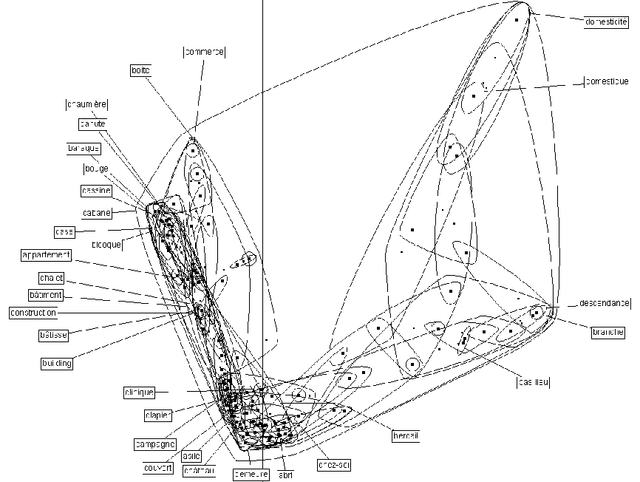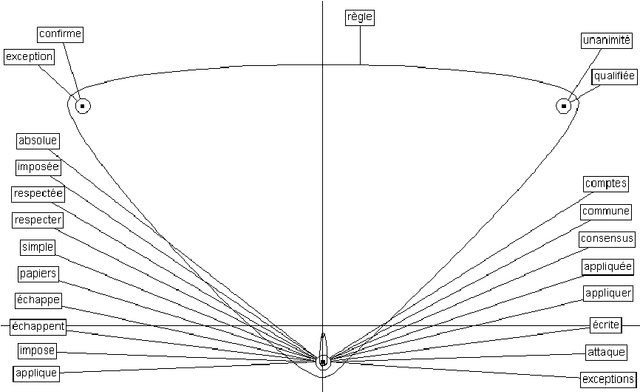Du corpus au dictionnaire
Paper and Code
Jan 26, 2009

In this article, we propose an automatic process to build multi-lingual lexico-semantic resources. The goal of these resources is to browse semantically textual information contained in texts of different languages. This method uses a mathematical model called Atlas s\'emantiques in order to represent the different senses of each word. It uses the linguistic relations between words to create graphs that are projected into a semantic space. These projections constitute semantic maps that denote the sense trends of each given word. This model is fed with syntactic relations between words extracted from a corpus. Therefore, the lexico-semantic resource produced describes all the words and all their meanings observed in the corpus. The sense trends are expressed by syntactic contexts, typical for a given meaning. The link between each sense trend and the utterances used to build the sense trend are also stored in an index. Thus all the instances of a word in a particular sense are linked and can be browsed easily. And by using several corpora of different languages, several resources are built that correspond with each other through languages. It makes it possible to browse information through languages thanks to syntactic contexts translations (even if some of them are partial).
 Add to Chrome
Add to Chrome Add to Firefox
Add to Firefox Add to Edge
Add to Edge